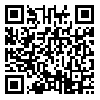BibTeX | RIS | EndNote | Medlars | ProCite | Reference Manager | RefWorks
Send citation to:
URL: http://dsme.hums.ac.ir/article-1-505-en.html
Introduction: Self-directed learning is a purposeful process for achieving lifelong learning in which the learner consciously accepts responsibility for activities. Therefore, the present study aimed to identify the structural relationship between self-directed learning skills and innovative academic behavior of medical students mediated by problem-solving ability.
Methods: The present study is a descriptive correlational study. The statistical population was 4149 students of Hamadan University of Medical Sciences, who, by defining the desired tool on the Pressline website, determined a sample of 351 people through the Krejci and Morgan table and completed the desired questionnaire online. In order to collect data, the Fisher et al (2001) Academic Self-Guided Learning Questionnaire, Holman et al (2012) Innovative Behavior, and Heppner and Petersen (1982) Problem Solving Questionnaire were used. Finally, the data were analyzed using the Pearson test and structural equation modeling analysis.
Results: It was shown that self-directed learning skills had a direct significant correlation with the variables of innovative learning behavior (r=0.314) and problem-solving ability (r=0.434), and innovative learning behavior also had a positive relationship with problem-solving ability (r=0.411). Also, the fit indices included chi-square (x2=243.848), relative chi-square (x2/df=2.771), goodness of fit (GFI=0.89), normalized fit (NFI=0.912), comparative fit index (CFI=0.909), and root mean square error of approximation (RMSEA=0.055), and these results indicate a favorable fit of the output model.
Conclusion: The structural model of self-directed learning skills transforms learners into lifelong learners and provides the basis for developing essential skills such as problem solving, critical thinking, and innovation. Because now it is how we learn that has become of fundamental importance.
Received: 2025/04/7 | Accepted: 2025/05/6 | Published: 2025/05/6
| Rights and permissions | |
 |
This work is licensed under a Creative Commons Attribution-NonCommercial 4.0 International License. |









